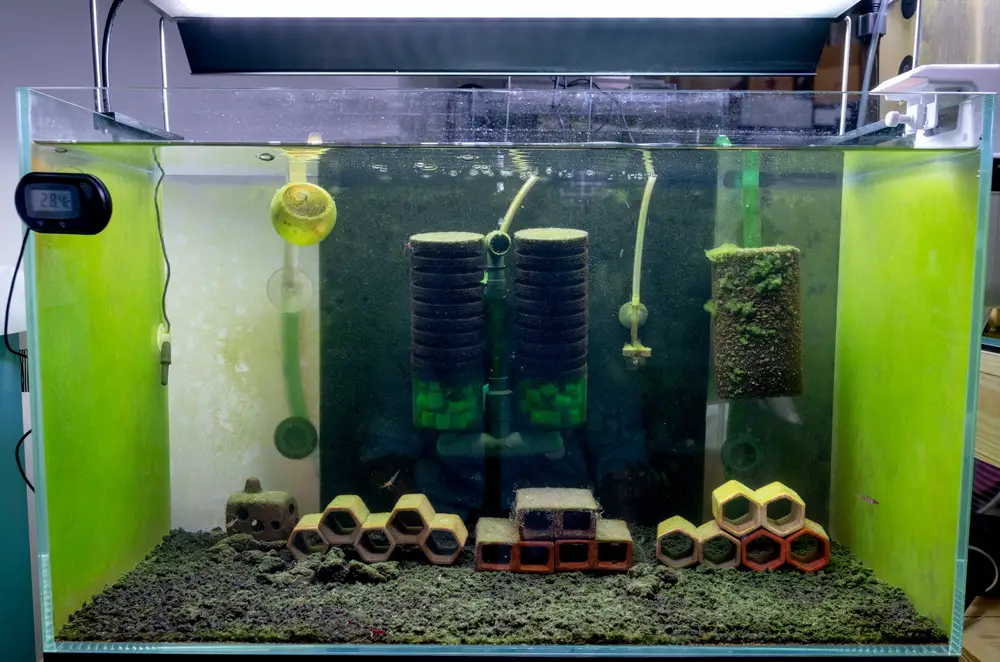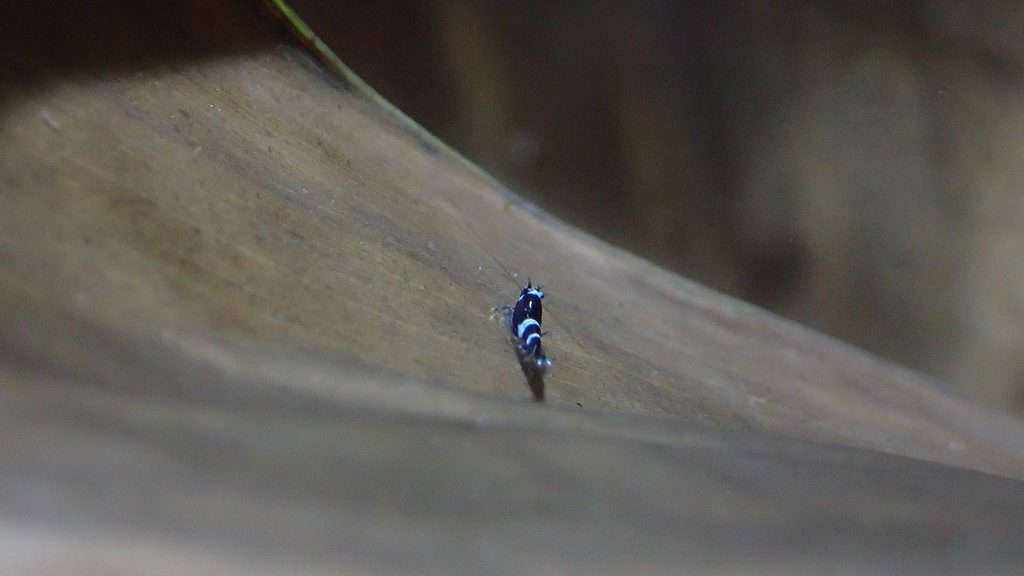Hello, Shrimpfam! Have you ever found yourself staring at your aquarium filter, a sense of unease creeping in as you watch your precious shrimplets venture dangerously close to it? You’ve probably heard the horror stories – shrimp getting sucked into the filter, never to be seen again. It’s a shrimp keeper’s nightmare, one that I’ve unfortunately experienced more times than I’d like to admit.
Over the years, I’ve faced this challenge head-on, experimenting with various solutions and learning from each failure. From my first year of shrimp keeping, when I lost a few of my favorite Shrimp to the filter, to just the last few years, where I successfully modify my filters to be ultimately shrimp safe, it’s been a journey of trial and error.
In this post, I’ll share my experiences, the solutions I’ve tried, and the one that finally worked for me. So, buckle up, Shrimpfam, we’re about to dive deep into the world of shrimp-safe aquarium filters!
Making an aquarium filter shrimp safe involves using a DIY pre-filter or sponge or a stainless steel filter guard to prevent shrimplets from being sucked into the filter. It’s a simple and effective solution that can save you from the heartache of losing your precious shrimp to the filter.
to prevent shrimplets from being sucked into the filter. It’s a simple and effective solution that can save you from the heartache of losing your precious shrimp to the filter.
What are the risks of not making an aquarium filter shrimp safe?
The risks of not making an aquarium filter shrimp safe are numerous and can significantly impact the health and survival of your shrimp population. The most immediate and apparent risk is the physical danger posed to the shrimp, particularly the smaller and more vulnerable shrimplets. Without a shrimp-safe filter, these tiny creatures can easily be sucked into the filter intake, leading to injury or even death.
Moreover, the constant threat posed by an unsafe filter can stress, injure and kill your shrimp, leading to decreased activity, lower breeding rates, and increased susceptibility to disease. Over time, this can lead to a decline in your shrimp colony’s overall health and vitality.
Failing to make your aquarium filter shrimp safe can put your entire shrimp colony at risk. It’s a danger that can be easily avoided with the right precautions, making it an essential step for any responsible shrimp keeper.
How does a pre-filter sponge work to make an aquarium filter shrimp safe?

 filters are best for shrimp tanks. Note the large pre-filter on the right.
filters are best for shrimp tanks. Note the large pre-filter on the right.A pre-filter sponge is a simple yet effective tool in making an aquarium filter shrimp safe. It’s essentially a sponge that is fitted over the intake tube of your aquarium filter. The sponge acts as a physical barrier, preventing shrimp, especially the smaller and more vulnerable shrimplets, from being sucked into the filter while still allowing water to pass through.
The mechanics of a pre-filter sponge are straightforward. The porous nature of the sponge allows water to flow into the filter while trapping larger particles, including your shrimp. This way, the water in your tank remains clean and well-circulated, but your shrimp stay safely where they belong – in the tank, not in the filter.
But a pre-filter sponge does more than provide a physical barrier. It also serves as a biological filtration system. Beneficial bacteria colonize the sponge, helping to break down waste and improve the water quality in your tank. This added benefit makes a pre-filter sponge not just a safety tool, but also a valuable addition to the overall health and balance of your aquarium ecosystem.
A pre-filter sponge works to make an aquarium filter shrimp safe by providing a physical barrier to protect your shrimp and by contributing to the biological filtration of your tank. It’s a simple solution that significantly benefits your shrimp and your tank.
What are the benefits of using a stainless steel filter guard for shrimp safety?

A stainless steel filter guard is another excellent tool for ensuring the safety of your shrimp in an aquarium. Much like a pre-filter sponge, it is designed to cover your filter intake, preventing shrimp from being sucked in. However, the benefits of a stainless steel filter guard extend beyond this basic function.
One of the primary benefits of a stainless steel filter guard is its durability. Unlike a sponge, which can degrade over time and require regular replacement, a stainless steel guard is built to last. It won’t wear out, break down, or lose its shape, ensuring long-term protection for your shrimp.
Another significant benefit is its ease of maintenance. Stainless steel filter guards are simple to clean. They don’t trap debris in the same way a sponge does, so they don’t become clogged and reduce the efficiency of your filter. A quick rinse is usually all it takes to keep them clean and functioning optimally.
Additionally, stainless steel filter guards are less likely to affect water flow. They have a more open design than sponge filters, allowing for better water circulation. This can be particularly beneficial in larger tanks, where maintaining proper water flow can be a challenge.
Finally, a stainless steel filter guard can also serve as a substrate for beneficial bacteria, contributing to the biological filtration of your tank. While not as effective in this regard as a sponge, it still provides some benefits.
The benefits of using a stainless steel filter guard for shrimp safety include its durability, ease of maintenance, minimal impact on water flow, and contribution to biological filtration. These benefits make it a valuable tool for any shrimp keeper.

How can I install a filter guard without disturbing my shrimp?
Installing a filter guard without disturbing your shrimp is a delicate task, but with a bit of care and patience, it can be done smoothly. The key is to minimize changes in the tank environment and to work slowly to avoid startling your shrimp.
Before you begin, make sure the filter guard you’ve chosen is the right size for your filter intake. It should fit snugly over the intake tube without any gaps that shrimp could slip through. If you’re using a stainless steel filter guard, check for any sharp edges that could harm your shrimp and file them down if necessary.
When you’re ready to install the filter guard, start by turning off your filter. This will prevent any sudden water movement that could stress your shrimp. Next, gently place the filter guard over the filter intake. Be careful not to bump into any decorations or plants in your tank, as this could scare your shrimp.
After the filter guard is installed, carefully turn your filter back on. Watch your shrimp and the water flow in your tank. If your shrimp seem undisturbed and the water flow is good, the installation succeeded.
Remember, the goal is to create a safer environment for your shrimp, so take your time and be gentle. With a bit of patience, you can install a filter guard without causing undue stress to your shrimp.

What maintenance is required to keep a shrimp-safe filter effective?
Maintaining a shrimp-safe filter involves regular cleaning and inspection to ensure it functions effectively without posing a risk to your shrimp. The exact maintenance routine can vary depending on the type of filter guard you’re using, but there are some general practices that apply to both sponge and stainless steel filter guards.
Firstly, it’s essential to regularly check the filter guard for any signs of damage or wear. Over time, a sponge filter guard can degrade and may need to be replaced. A stainless steel guard, while more durable, can still become damaged or dislodged. Regular inspections will help you catch any issues early before they can pose a risk to your shrimp.
guard can degrade and may need to be replaced. A stainless steel guard, while more durable, can still become damaged or dislodged. Regular inspections will help you catch any issues early before they can pose a risk to your shrimp.
Cleaning your filter guard is also a crucial part of maintenance. Over time, debris can accumulate on the guard, reducing water flow and potentially creating a breeding ground for harmful bacteria. A sponge filter guard can be gently squeezed out in a bucket of tank water to remove debris. A stainless steel guard can be rinsed under running water. Remember, never use soap or detergents as they can harm your shrimp.
Finally, it’s essential to monitor the water flow in your tank. If you notice a decrease in flow or your filter seems to be working harder than usual, it may be a sign that your filter guard is clogged and needs cleaning.
Maintaining a shrimp-safe filter involves regular inspections, cleaning, and water flow monitoring. By keeping up with these tasks, you can ensure your filter protects your shrimp without compromising the health of your tank.
In Closing: Making Your Aquarium Filter Shrimp Safe
Ultimately, ensuring your aquarium filter is shrimp safe is an essential step in shrimp keeping. Whether you choose to use a pre-filter sponge or a stainless steel filter guard, the goal is to protect your shrimp from the dangers of the filter intake. Regular maintenance and inspection of your filter guard will ensure it continues to function effectively, providing a safe and healthy environment for your shrimp.
Remember, shrimp keeping is a journey filled with learning and growth. Don’t be disheartened by challenges along the way. Instead, see them as opportunities to learn and improve. And if you ever need help or advice, don’t hesitate to reach out. If you can’t reach me here, check out Aquarium Shrimp Keeping on Facebook. We’re a community of shrimp keepers who are always ready to lend a hand.
On a final note, keep exploring, keep learning, and most importantly, keep enjoying the wonderful world of shrimp.
Happy Shrimp Keeping!
FAQ
Q. Can shrimp get sucked into the filter?
A. Yes, particularly small and vulnerable shrimplets can get sucked into the filter intake if it’s not covered by a filter guard. This can lead to injury or even death, which is why it’s crucial to make your aquarium filter shrimp safe.
Q. How often should I clean my filter guard?
A. The frequency of cleaning your filter guard depends on the type of guard and the conditions in your tank. However, as a general rule, it’s a good idea to check and clean your filter guard at least once a month to ensure it’s functioning effectively.
Q. Can a filter guard affect water flow in my tank?
A. A filter guard can slightly reduce the water flow in your tank due to the barrier it creates. However, this reduction is usually minimal and doesn’t significantly affect the overall water circulation in the tank.
Q. Do I need to replace my filter guard?
A. The need to replace your filter guard depends on its type and condition. A sponge filter guard can degrade over time and will need to be replaced, while a stainless steel guard is more durable and can last for several years if properly maintained.
Q. Can a filter guard improve the water quality in my tank?
A. Yes, a filter guard can contribute to the biological filtration of your tank. Beneficial bacteria can colonize the guard, helping to break down waste and improve water quality.
